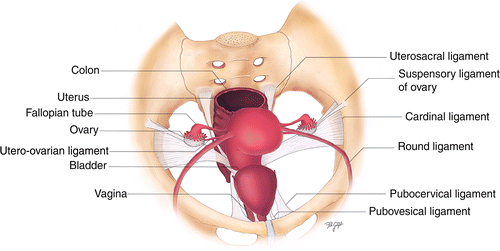Telling someone that they have a prolapse is often quite the deflating statement. Given the choice I’m sure we would all rather not have a prolapse, but we know that around 50% of women who have had a baby will be diagnosed with a prolapse at some point in their lives.
So what exactly is it?
Can pelvic floor exercises fix it?
Does this mean I can’t run (or do other high impact exercise) anymore?
My brain likes simple – so the way I think about it is like this:
Our pelvic organs sit, surprise surprise, inside our pelvis. In women this includes our bladder, vagina/uterus, and rectum.
Underneath these organs is our pelvic floor – a group of muscles that, together, are shaped somewhat like a bowl or hammock. This provides support from the bottom. We can squeeze and strengthen these muscles much like any other muscle in our body (pelvic floor exercises are for our pelvic floor muscles like bicep curls are for our biceps).

Now imagine that those organs are like puppets on strings – we have ligaments (the strings) that hold our pelvic organs to our pelvic bones and suspend them. So this provides the support from the top. These structures are non-contractile – we can’t squeeze or strengthen them.

Prolapse is the result of these “strings” (ligaments) being overstretched and no longer suspending our organs as they normally would. This results in more laxity and therefore movement of these organs. Thanks to gravity, this movement is downward – usually resulting in those organs pressing against and bulging into the vaginal walls – which are very flexible. Hence the main symptoms of POP are a bulging/heaviness/dragging in the vagina.
So hopefully that answers the “what is it?” question.
On to the “can pelvic floor exercises fix it?” question.
Short answer – no. Because prolapse is a laxity of the supportive “strings” not the supportive muscles underneath the organs, strengthening the pelvic floor muscles is not going to fix your prolapse. However, strengthening the alternative support system can help to reduce the symptoms that you may experience, and reduce the further strain on those already lax tissues. So even though pelvic floor exercises won’t fix your prolapse, they are important in helping to manage/protect it.
So, what does prolapse mean for running / other high impact exercise?
Prolapse does not mean that you cannot ever do high impact exercise again. However, we do want to avoid making your prolapse worse and make sure that you can do these activities symptom free. This means making sure that we get you back to high impact exercise gradually, and ensure we are managing your symptoms effectively along the way. During and in between each bout of exercise we want you to be symptom free (no heaviness/bulging/dragging in your vagina). If we struggle to get you exercising without symptoms, then we may suggest you use a device called a pessary.
What is a pessary I hear you ask? A pessary is a medical grade silicone device that sits inside your vagina, supporting your pelvic organs. They are very useful in eliminating symptoms of prolapse and, because they support your organs, they protect against the excess force that can further weaken your supportive “strings” – thereby protecting against making your prolapse worse. People often seem a little hesitant at first – but overwhelmingly people are very happy with the results once they try them!
In addition to pelvic floor exercises, a gradual return to exercise, and using pessaries – below are two further suggestions we make when it comes to managing your prolapse:
- Avoid straining on the toilet – e.g. due to constipation. Straining causes a strong downward pressure on our pelvic organs. So if we think those supporting structures (strings) are lax, straining will have a potentially progressive effect on a prolapse (particularly when the straining is regular!).
Avoid constipation – stay well hydrated, have a good level of fibre in your diet, exercise regularly. And use the perfect poo position! - Use “The Knack”
Before doing something that requires a lot of effort, or an increase in pressure in our abdomen, squeeze your pelvic floor muscles. While holding, perform the activity, then you can relax again. For example, if you are about to cough – squeeze, cough, relax.
As always, everyone’s bodies and symptoms are unique. If you have a prolapse and this post has brought up any questions, it is best to book in with a pelvic health physiotherapist for an appointment.

